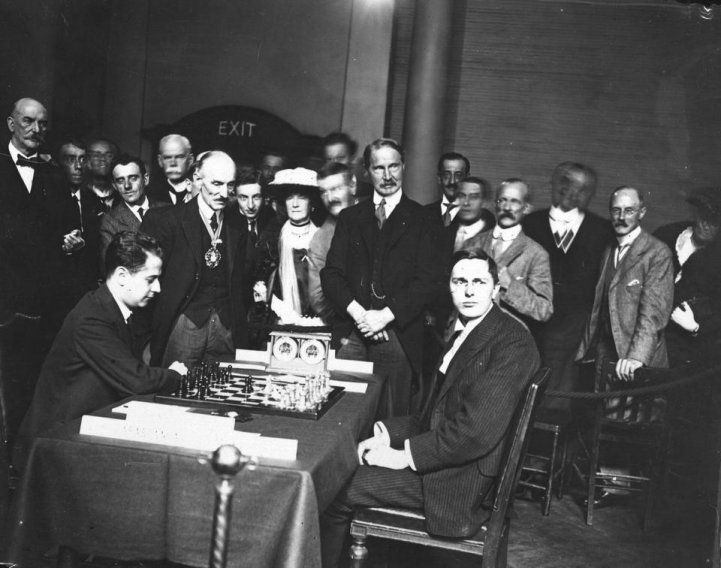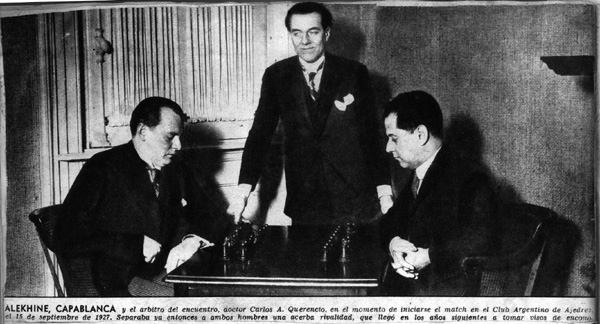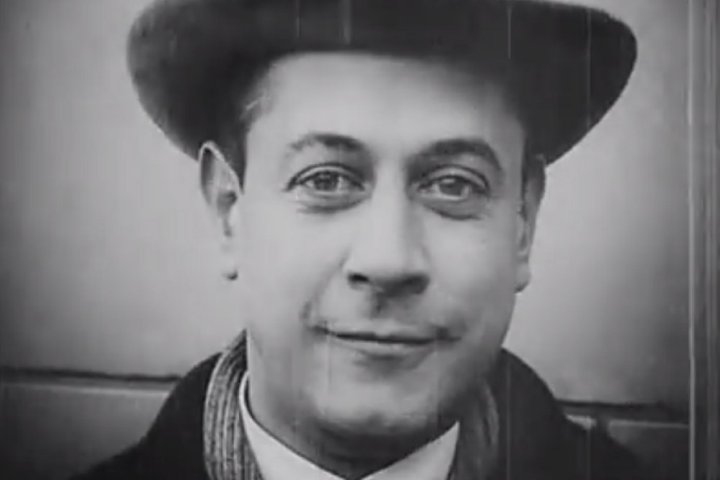Capablanca has drawn up a set of rules for future championship matches, and all the great masters now playing at the London Congress have agreed to them….
- The Observer (London), 13 August 1922
As one of the cities with the richest chess tradition, London has hosted some of the most significant events in history. London 1851 saw Adolf Anderssen, Howard Staunton, and the rest of Europe’s outstanding players battle in the world’s very first international tournament. London 1862 employed the round-robin format for the first time. London 1883 established Wilhelm Steinitz and Johannes Zukertort as the world’s strongest players, leading them to dispute the title of world champion for the very first time in 1886. London 1899 affirmed Emanuel Lasker as a worthy World Champion and tournament fighter like no other.
More than two decades were to pass in the new century before another stellar tournament came to London soil. It happened that London 1922 not only matched the strength of the city’s great tournaments before it, but arguably also surpassed their significance.
In 1922, Europe had been four years removed from the conflagration that was the First World War and the Russian Revolution. International chess had ceased from the time the war began in 1914, but by 1922 it was evidently back in full swing. Jose Raul Capablanca, in fact, had wrested the world title from the pre-war champion, Lasker, in Havana, Cuba, the previous year.
As though chess itself was rising from the war’s ashes, the 1920s saw the development of novel ideas. Aron Nimzowitsch, Richard Reti, and Gyula Breyer, adventurous and creative players, shook the classical school with their revolutionary opening play. When masters soon assimilated their dynamic, counter-attacking brand of chess, the Hypermodern Age began.
Amidst this backdrop, the British Chess Federation called for an international tournament that was to be the main event of its 1922 congress. The field it assembled was impressive. There were the World Champion, Capablanca, and the day’s other leading lights who, sooner or later, were to become rightful contenders to the crown: Alexander Alekhine, Akiba Rubinstein, Efim Bogoljubov, Richard Reti, Savielly Tartakover, Milan Vidmar, and Machgielis Euwe. Rounding the list were the current British Champion Frederick David Yates, Australian Champion Charles Gilbert Watson, Italian Champion Davide Marotti, Canadian Champion John Morrison, British master Henry Ernest Atkins, and Russian Master Eugene Znosko-Borovsky.
Writing for The Times on the eve of the tournament, Capablanca assessed the chances of the participants. "To my mind," he wrote, "there are four candidates for the first two prizes – namely, Rubinstein, Bogoljubow, Alekhine and Réti." Reflecting on his own, he remarked: As to my own personal chances, I will say that I feel confident of not finishing worse than third or fourth.

World Champion J.R. Capablanca (left) takes on Max Euwe in the first round of London 1922 | Photo courtesy of www.bonhams.com
While Capablanca was quite modest, he never left any doubt about his superiority. He gained one victory after another with ease and scored 11 victories and four draws in 15 rounds as the runaway winner. Alekhine placed second, 1.5 points behind. Vidmar came third, Rubinstein fourth, and Bogoljubov fifth.
Final standings after 15 rounds
He was a child prodigy and he is surrounded by legends. In his best times he was considered to be unbeatable and by many he was reckoned to be the greatest chess talent of all time: Jose Raul Capablanca, born 1888 in Havana.
Apart from being a great chess event, London 1922 has become significant for what is now known as the London Rules, a set of conditions that were to supposedly govern future world championship matches. As the rules’ proponent, Capablanca made it known that he wanted a set of standard terms established so that the often-contentious match negotiations between champion and challenger could be avoided. Alekhine, Rubinstein, Maroczy, Reti, Bogoljubov, Tartakower, and Vidmar agreed to and signed the terms. Although a number of other strong players such as Lasker, Nimzowitsch, and Rudolf Spielmann weren’t present, the rules were considered binding in every world championship thereafter. The London Rules’ salient points were the following:
- the World Championship Match was to be in a first to win 6 games format;
- the time control was to be 40 moves in 2.5 hours;
- the champion must defend his title within one year of receiving a challenge, but he would not be obliged to play match if the prize fund does not reach $10,000 in gold;
- out of the total prize fund the champion is to receive 20% as appearance fee, and out of the remaining part the winner is to receive 60% and the loser 40%.
- the new champion is obliged to defend his title under the same conditions.
While the London Rules served an appreciable purpose, it may have denied chess history matches between Capablanca and deserving masters of the time. Even before London 1922, Rubinstein had issued a challenge to Capablanca, and with the London Rules adopted, Capablanca gave him until December 31, 1923, to raise the prize fund. Rubinstein failed. Frank Marshall and Nimzowitsch also issued challenges in 1923 and 1926 respectively, but nothing came out of them. The $10,000 purse was a colossal sum then that Capablanca had seemingly placed an impenetrable wall between him and his challengers.
Finally, Alekhine was able to meet all the rules’ conditions in 1927. The Argentine Chess Federation offered to raise the prize fund, and the match’s venue was to be Argentina’s capital city, Buenos Aires. A popular opinion goes that the federation did so not so much to support Alekhine as to give Capablanca, a Latin American hero, the chance to prove his superiority over his strongest rival on South American soil.
Capablanca’s loss of the title in 1927 was a complete surprise as apart from being thoroughly dominant since his appearance in San Sebastian 1911, he had thumped a world-class field that included Alekhine in the great New York 1927, a few months before their World Championship Match. His winning margin of 2.5 points over the runner-up Alekhine was even larger than that he posted over him in London 1922. He immediately pressed for a rematch, but Alekhine held him to the same terms of the London Rules.
On this DVD GMs Rogozenco, Marin, Müller, and IM Reeh present outstanding games, stunning combinations and exemplary endgames by Alekhine. And they invite you to improve your knowledge with the help of video lectures, annotated games and interactive tests
How the London Rules thereafter helped Alekhine avoid a rematch with Capablanca remains unsettled. Alekhine was more than surprised with his victory, and he has been considered fortunate to dodge a second encounter by Capablanca’s inability to raise the S10,000 match fund. Their most celebrated successor, Garry Kasparov, however, believes that Capablanca himself was fine with the rematch failing to materialize, as a second consecutive loss would have only affirmed Alekhine’s superiority. In any case, Alekhine proceeded to defend his title against Bogoljubov in 1929 and 1934, and Euwe in 1935, not by the London Rules’ first to win six games-format, but by fixed, thirty-game matches.

Alekhine (left) challenges Capablanca in the 1927 World Championship Match, the only match played strictly according to the London Rules of 1922 | Photo courtesy of www.chessgames.com
One can reasonably assume that Capablanca proposed the rules to establish world championship match terms favorable to him, but he seemed to regret the first to win six, unlimited number of games format. Ruing that his match with Alekhine had taken thirty-four games, he dissuaded FIDE President Alexander Rueb in 1928 from adopting it again in future matches. He wrote Rueb: "It is quite possible that the match may never be finished, or that it may last so long as to make the result merely dependent on the physical and mental endurance of the players. In other words, it would depend on who would be exhausted first, and not on who was the better player. This does not take into consideration the cost of the match, which is evidently greater the longer it lasts."
The London Rules of 1922, then, allowed the 1927 World Championship Match between Capablanca and Alekhine to materialize, but it seemingly became a roadblock to a return match. Perhaps it wasn’t, if only Capablanca and Alekhine were more than willing to face each other a second time. A rematch between an Alekhine who was reaching his peak after 1927 and a Capablanca who would have taken Alekhine more seriously than he first did would have been one for the ages.
London 1922 is also remembered for interesting, if less significant reasons. One of these is that the tournament popularized the London System. This opening was first played by James Mason in 1883, and in London 1922 it was employed in a fair number of the tournament’s games that it ended up bearing the city’s name. Alekhine and Rubinstein played it against Euwe, and so did Capablanca against Reti. It is a mainstream opening up to today and is a solid alternative to the Queen’s Gambit.
London 1922, lastly, has left a very colorful anecdote between Vidmar and Capablanca. Vidmar recalls in his memoir that he was losing his game against Capablanca when adjournment came. Before they parted, Vidmar told Capablanca in French that he would probably resign the game soon. The following day at resumption, the Cuban didn’t appear. As Capablanca’s clock kept ticking, Vidmar worried that he might have led Capablanca to believe that he would resign without resuming play, or that he had written "resigns" on his scoresheet. Capablanca, after all, wasn’t perfectly fluent in French. Just before Capablanca’s flag fell, Vidmar tipped his King over to resign. The British press called his act "the fairest mover ever made."
Many of the games in London 1922 have made it to the best games collection of its great participants, and that alone makes it a tournament to be remembered. With the London Rules that regulated the 1927 World Championship Match between Capablanca and Alekhine, the event has passed on as, truly, one of the most significant in history.
Games
To commemorate London 1922, London System games in the tournament are featured. They all share something in common – White plays patiently and grinds Black down, quite the typical way to win with the London System.
Alekhine vs. Euwe, Round 4
Capablanca vs. Reti, Round 10
Rubinstein vs. Euwe, Round 11
Rubinstein vs. Tartakower, Round 13
Links
More articles by Eugene Manlapao

























